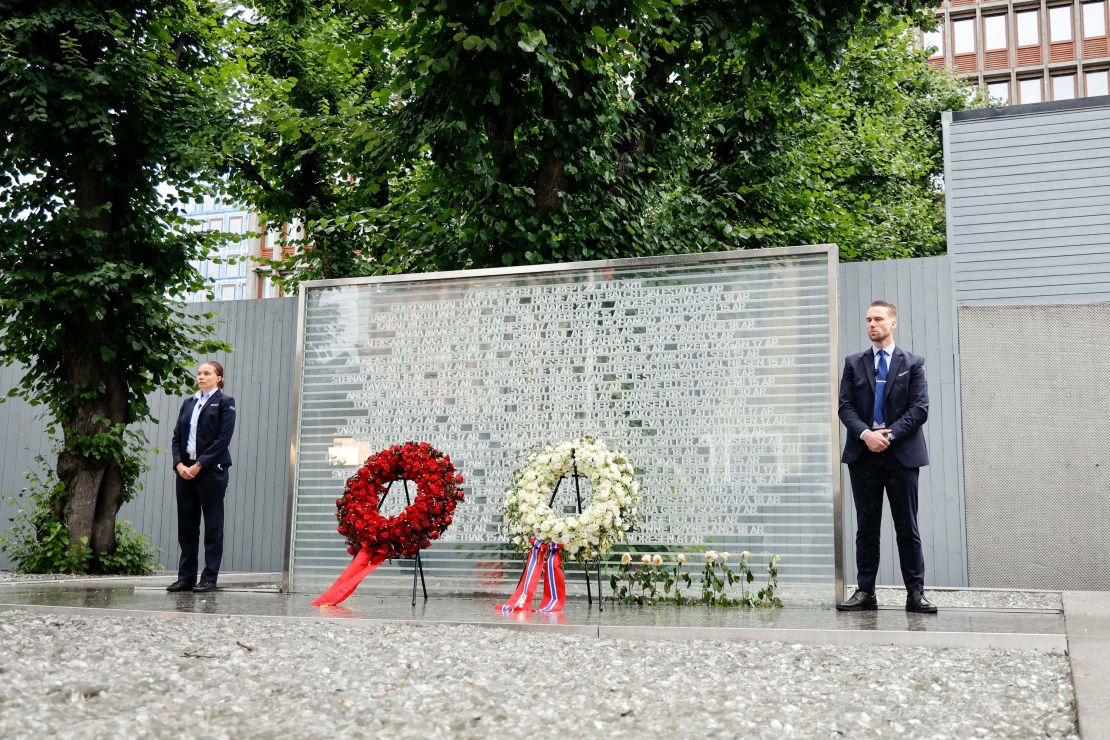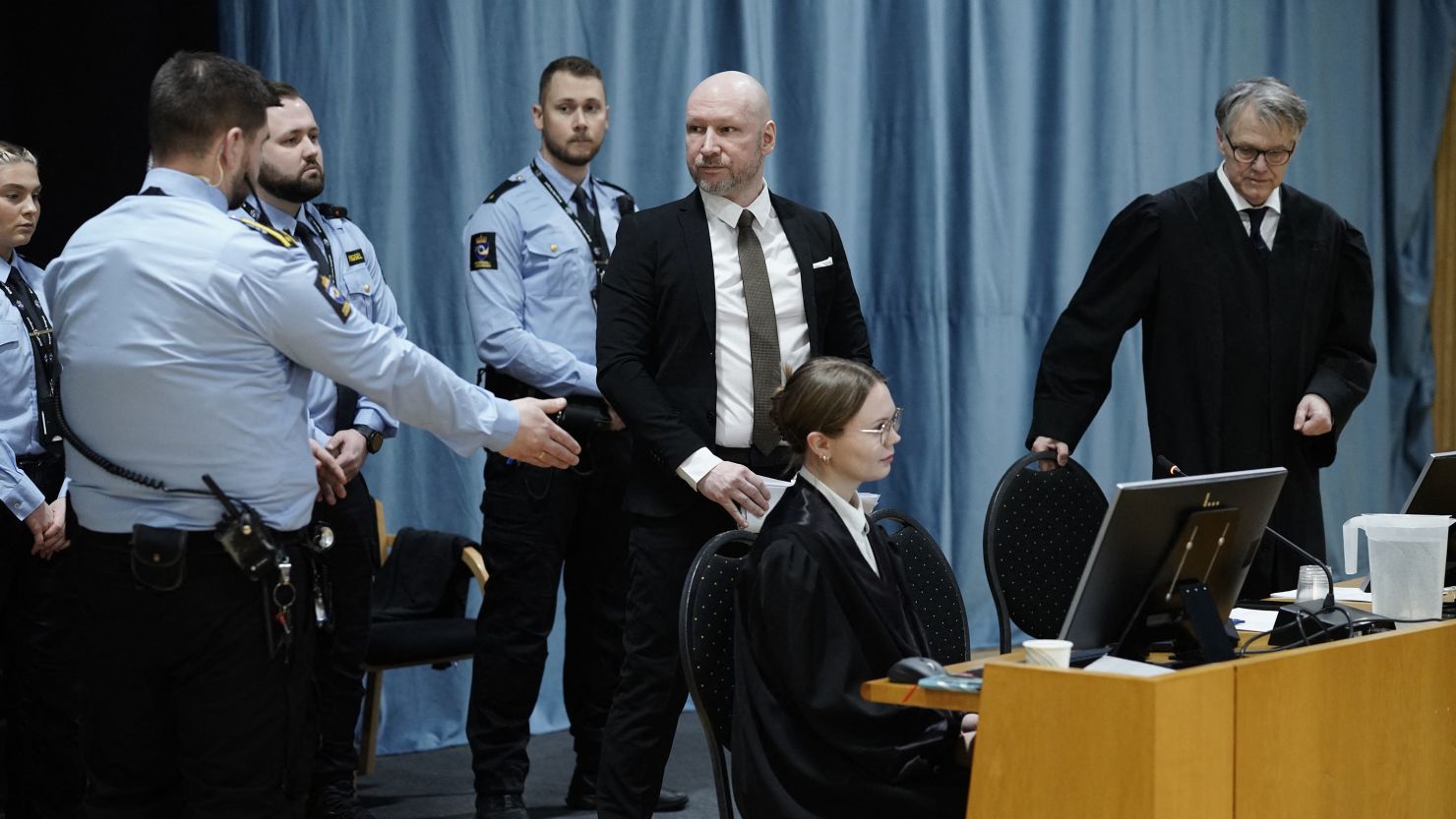Anders Behring Breivik, the far-right fanatic who killed 77 people in a bombing and shooting rampage in Norway in 2011, appeared in a court set up in his prison on Monday to launch a legal bid to end his years in isolation.
Wearing a black suit, white shirt and brown tie, Breivik said nothing and made no gesture as he entered the hearing, set up in the gym of the high-security jail 70 kilometers (40 miles) northwest of the capital Oslo.
The 44-year-old sat impassively while his lawyer laid out his argument that the conditions of his detention violated his human rights.
“He has been isolated for about 12 years,” lawyer Oeystein Storrvik, told the hearing. “He is only in contact with professionals, not with other inmates.”
In earlier court filings, Storrvik had argued the isolation had left Breivik suicidal and dependent on the anti-depression medication Prozac.
Breivik, who emailed out copies of a manifesto before his attacks setting out his theories, is suing the state and also asking the court to lift restrictions on his correspondence with the outside world.
He killed eight people with a car bomb in Oslo then gunned down 69 others, most of them teenagers, at a Labour Party youth camp in Norway’s worst peacetime atrocity.
His case has been a grim test for a country that is still shaken to its core by the horror of his acts but has also long taken pride in the rehabilitation efforts of its justice system.

Breivik spends his time in a dedicated section of Ringerike prison, the third prison where he has been held. His separated section includes a training room, a kitchen, a TV room and a bathroom, pictures from a visit last month by news agency NTB showed.
He is allowed to keep three budgerigars as pets who fly freely in the area, NTB reported.
Lawyers representing the justice ministry say Breivik must be kept apart the rest of the prison population because of the continuing security threat he poses.
They said in their court filing his isolation was “relative” given he has contacts with guards, a priest, health professionals and, until recently, an outside volunteer whom Breivik no longer wishes to see.
He also sees two inmates for an hour every other week, the lawyers said.
Control over Breivik’s contacts with the outside world is justified by the risk that will inspire others to commit violent acts, the lawyers argue.
“Specifically, this applies to contacts with far-right circles, including people who wish to establish contact with Breivik as a result of the terrorist acts on 22 July 2011,” they said in the filing.
Breivik was cited as an inspiration by Brenton Tarrant, who killed 51 people in two mosques in Christchurch, New Zealand in 2019.
Breivik is serving a 21-year sentence - the longest a Norwegian court can impose - which can be extended for as long as he is deemed a threat to society.
His prison is on the shore of the Tyrifjorden lake, where the island of Utoeya, the site of Breivik’s shooting spree, lies.
Breivik also sued the state in 2016, arguing it was breaching the European Convention on Human Rights, including sections saying no one should be subject to “torture or to inhuman or degrading treatment or punishment.”
He initially won the case but that was overturned on appeal a year later before any restrictions were lifted.
In the new case, the judge’s verdict – there is no jury – will be issued in coming weeks.

